What to eat during intermittent fasting guide

“What can I eat during intermittent fasting??” has every intermittent faster uttered at least once since the dawn of time.
There’s a short answer to that question:
You can eat whatever you like!

That’s actually 100% true (though not necessarily 100% optimal).
Intermittent fasting isn’t a diet. It’s an eating style that structures your day — or week — into an alternating pattern of eating and fasting.
Eat, fast, repeat. It needn’t be any more complex than that.
And there’s a long answer (this is where the optimal part comes in):
Eat more of the foods that’ll make your intermittent fasting into a powerful driver of health benefits, weight loss, revved-up energy, and snappy thinking.
We suspect that’s the answer you’re really interested in.
We get it. You want to feel confident that your food choices complement your fasting rather than working against it.
Let’s make sure that happens. Consider this your ultimate guide on what to eat during intermittent fasting.
Ten foods to eat while intermittent fasting
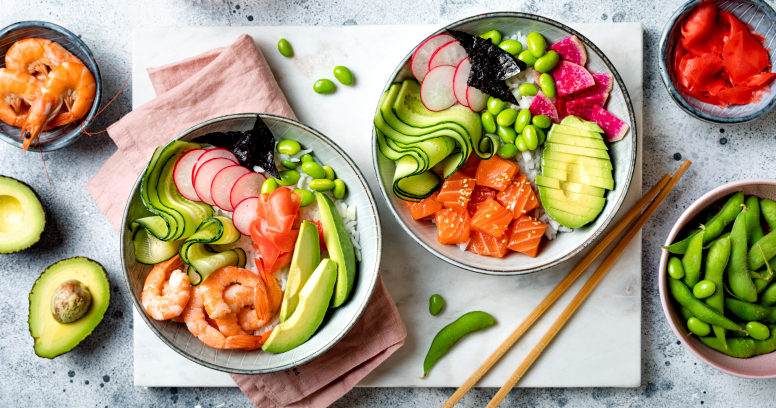
Everywhere you look, there’s information about what you should eat.
Some of it sounds plausible, and it jives with what you thought (“Eat more fruit” sure sounds like something your grandpappy might have said).
Some of it sounds like baloney (bulletproof coffee … really?!).
Much of it falls between those two stalls (uhhh, are potatoes good or bad???)
It can be hard to know what’s true. Add intermittent fasting into the mix, and you’re left wondering:
Can you really eat anything while intermittent fasting?
You actually can. Intermittent fasting is an approach to eating that is more about when you eat rather than what you eat.
But, if you want to feel your best, function well, and maintain a healthy weight, including certain foods in your day-to-day diet may accelerate your results.
We can also help you figure out a meal plan that incorporates them. Check out our Simple quiz to get started!
Without further ado, here are 10 of the best foods for intermittent fasting.
- Whole grains
In the whole grain basket, we have the familiar:
- oats
- brown rice
- whole wheat pasta
and the less familiar:
- quinoa
- buckwheat
- freekeh
Whole grains work great with intermittent fasting because their fiber content keeps you full and makes your digestion happy.
Some of these probably seem like strange options (what on earth is freekeh?!), and you might not yet know how to use them.
That’s OK. Try moving along the spectrum of grains, starting with the easiest, friendliest-looking option. Switch white rice for brown, for instance, or white pasta for whole wheat.
Then when you’re feeling brave, throw some freekeh into a salad or soup (it’s actually surprisingly nice. Kinda chewy!).
- Avocado
Heck, isn’t avocado full of fat?
Why yes, it is.
That’s exactly why it makes our “what to eat when intermittent fasting” list.
Avocado is full of unsaturated fat — the healthy kind — and that fat content will help satisfy your appetite. A randomized study revealed what a humble avocado half can do (tl;dr: it’ll keep you full for hours).[1]
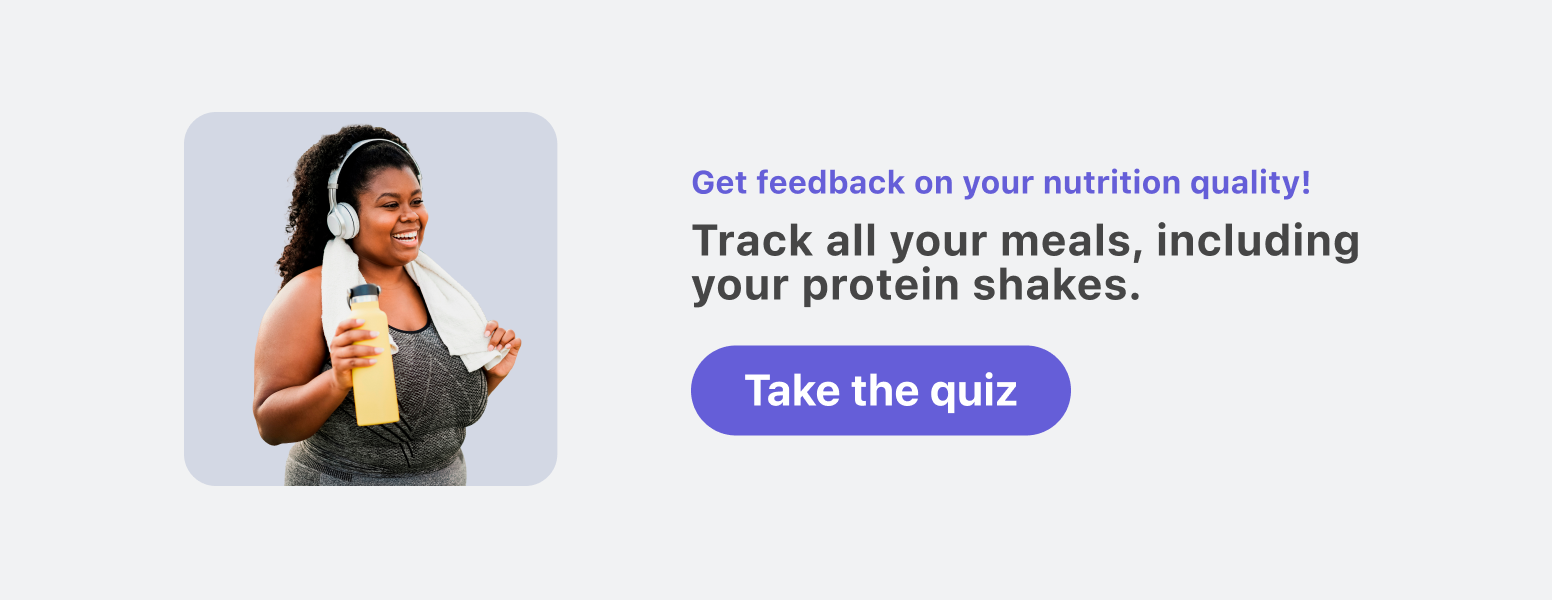
- Legumes
Let’s start by decoding “legumes.” Nutrition professionals are very fond of them, yet they often feel a bit obscure. In real food terms, legumes are:
- lentils
- peas
- chickpeas
- beans
- soybeans
They might make you a bit stinky (thanks, indigestible starch!), but legumes bring the fire to your intermittent fasting life by being full of nutrition yet low in calories, and their protein and fiber content helps keep you fuller for longer with more energy to boot.
- Probiotics
Probiotics are live microorganisms (i.e., bacteria and/or yeasts that naturally occur in the body) that benefit our health when we eat them in adequate amounts. Studies suggest they may promote a healthy gut and support your digestion.[2]
They could also improve your ability to regulate blood sugar, with one study showing that pairing intermittent fasting with probiotics can improve your HbA1c (i.e., your average blood sugar levels for the last 2–3 months).[3]
To get that probiotic boost, try adding a little fermented food like kimchi, live yogurt, or kombucha to your life.
- Fruits
Your grandpappy was right; eating more fruit is a good thing.
It’s one of the best foods to eat while intermittent fasting because every fruit is a powerhouse of health in a tiny, colorful package.
Fruit is packed with nutrients that help your body do its job. Whether you choose apples, berries, oranges, plums, etc. — you’re going to get a powerful hit of phytonutrients, vitamins, minerals, fiber, and carbohydrates, and your body will feel all the better for it.
And, they’re low calorie, so when you replace other, higher-calorie foods with fruit, you get more food — and more nutrients — with fewer calories.
- Dark-colored and cruciferous vegetables
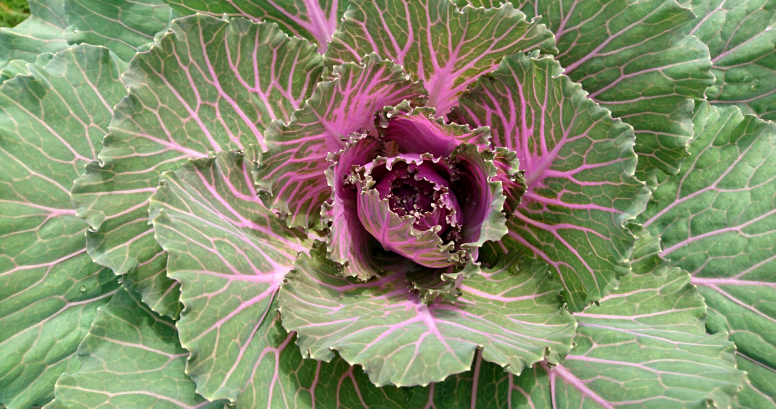
Just like fruit, veggies have magical effects on our health.
They help our gut, keep our digestion ticking over smoothly, keep us full and energized, and even give our mental health a leg up.[4,5]
To hit the Next Level with your veggie intake, loop in the darker-colored and cruciferous kind. All veggies have goodness in every little fibrous cell of their being, but veggies like:
- broccoli
- kale
- cauliflower
- brussels sprouts
- chard
are among the best of the best foods for intermittent fasting, as they’re even more loaded with fiber and nutrients. (And they’ll keep you regular. Win-win!)
- Potatoes
We know you’re wondering.
It’s time to put the “Can I have potatoes (while intermittent fasting)?” conundrum to bed.
The answer is … Yes.
White (and sweet) potatoes give you energy, are low in calories and high in nutrients, and fill you up for a good while.[6,7]
And they don’t harm weight loss.[8] Promise.
- Fish and seafood
Foods from the sea contain impressive amounts of protein (think of all the muscle you’d have if you lived in water and had to outrun sharks all day).
That enviable protein content, plus being high in healthy fat, makes fish and seafood an awesome example of what to eat when intermittent fasting.
It’ll keep you fuller for longer, help curb your cravings, and is a direct input into preserving your muscle mass. The more muscle you have, the more calories you burn during any activity, so you want to keep what you have (and, ideally, build more!).
- Eggs
Just like fish and seafood, the protein and healthy fats in eggs make them a solid choice when you’re intermittent fasting.
Try them for breakfast and see how they affect your hunger throughout the day (these guys got good results).[9]
- Nuts and seeds
If you’re noticing a theme here, you’re not wrong:
Foods high in protein and higher in healthy fats are those that hit the top spot over and over in our “What to eat while intermittent fasting” hall of fame.
Nuts and seeds are right up there as an important part of a healthy fasting diet.
Settle for small amounts because they’re high in calories, but don’t be scared to add them to your daily snack roster.
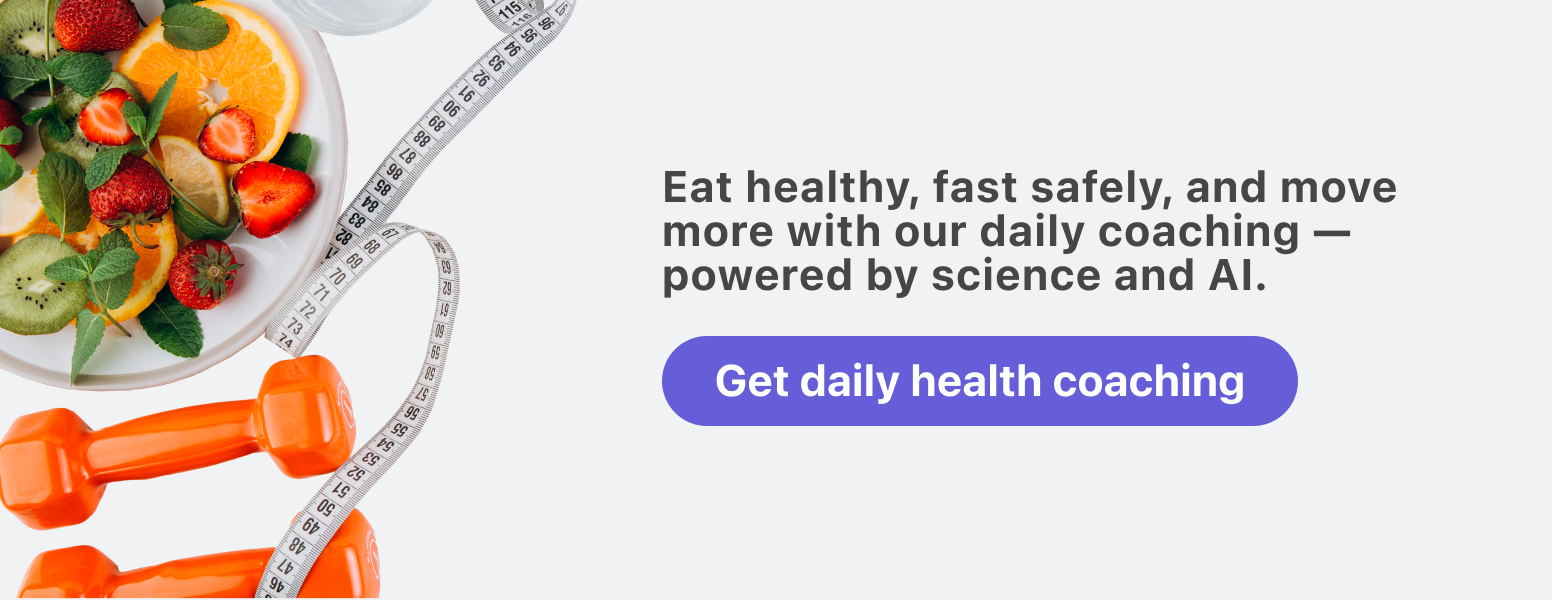
What can you have during your fasting window?
By now, you should feel pretty confident to answer the “What can you eat (and drink) while intermittent fasting?” question.
Let’s move then to this other crucial piece of the Faster’s Playbook:
“What can you have while fasting?”
Intermittent fasting works on one simple premise:
When you’re fasting, you don’t eat (or drink) anything with calories in it.
That gives you a very short, easy-to-remember list of things on your “What can I eat while fasting” cheat sheet:
- black coffee
- tea without milk or sugar
- water
(Here’s a more complete rundown of fast-friendly beverages to answer all your “What can I drink while fasting?” questions.)
The bottom line is this:
Any foods or drinks containing more than 10 calories will break your fast.
So, in order to fuel your body — through your fasting window and generally speaking — you want to ensure you’re getting all the nutrients and calories you need during your eating window.
Our 10 foods above are excellent foods to eat during your eating window because they’re nutritionally dense sources of energy and fullness — which means they’re great for fighting off hunger during your fasting window.
Foods to limit or avoid during intermittent fasting
To be an intermittent faster who glides through their fasts with grace and poise (and without melting down into a hangry puddle of grouch), what you don’t eat matters as much as what you do.
Some foods spike your cravings.
Others make you hungrier.
You probably have foods that, once you start eating them, you find it hard to stop.
These are the foods to try and minimize (remembering that it’ll never be perfect, and that’s OK).
What do those foods look like? Generally, they have a few things in common.
They’re usually:
- Processed. They come in a bag, packet, or carton; they’re miles away from how they started out life — for instance, a bag of chips doesn’t look like a potato; a chicken nugget doesn’t look like a chicken — and they have many ingredients.
- Full of refined carbohydrates. For instance, fruit juice, soda, bread, candy, cake, and desserts are full of sugar, high fructose corn syrup, and refined flour.
- High in saturated and trans fats. Look for the words “partially hydrogenated oil” or “hydrogenated oil” on the labels to find these in your food.
These are the foods that, when eaten too often, can undermine your fasting efforts and stop you from getting the outcome you want.
They don’t contain much nutrition, but they do contain some powerful combinations of fat, salt, and sugar that cleverly influence your brain chemistry to make you want to eat more (and more and more …) of them.
We know it’s not easy to give up foods like this. Simply try your best and see how it affects your progress if you eat fewer foods like:
- chips
- soda
- fruit juices
- cake / pastries
- Ice cream
- processed cheeses and meats
- candy and chocolate
Best foods for breaking your fast
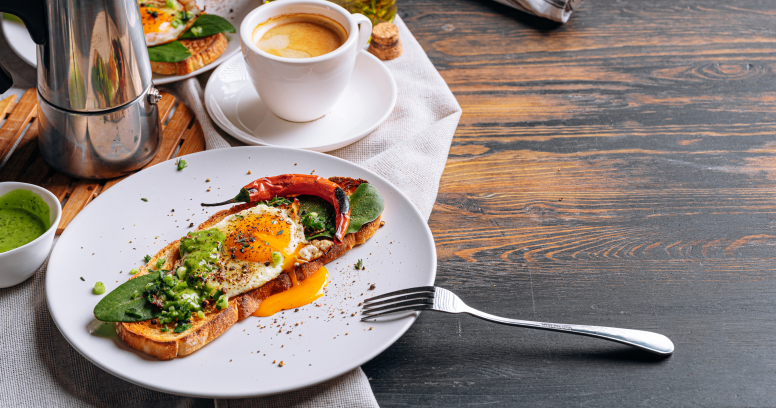
It’s time to break your fast! Yeah!
Slow down there a moment. Don’t let your hunger or excitement drive the bus here. This is a time for smart food choices.
Choose something you enjoy eating and that contains some slow-release energy. This will ensure a steady, sustained build in energy rather than a fast spike followed by a fast crash.
Here again, you can choose from our list of 10 best foods for intermittent fasting. Try:
- an omelet with beans and broccoli
- a chicken, lentil, and veggie soup
- oatmeal (bonus points if you try quinoa oatmeal) with berries and a spoonful of nut butter
- a fruit, yogurt, and spinach smoothie (betcha don’t even notice the spinach)
Foods like these will start your eating window off strong.
Creating a fasting meal schedule
If all these dos and don’ts are starting to sound like a lot to juggle — you’re not trying to create an eating routine fit for the circus! — an intermittent fasting meal plan may come in handy.
Planning your meals in advance (usually on a daily or weekly basis) can not only help you make better food choices but also ensure you’re meeting your nutritional needs. It also means you’re more likely to say sayonara to cravings, hunger pains, and last-minute food decision panic.
The best meal plan for intermittent fasting is one that factors in your needs and preferences without stressing you out. You want what you eat to be enjoyable as well as nutritionally beneficial, after all! And if the idea of having a plan to set already sounds like “yet another chore,” maybe a meal plan isn’t the best choice for your food routine.
If you want to give it a try, check out our guide on how to build a meal plan to get started.
Is intermittent fasting for you?
You’ve read all about how to plug great foods into your intermittent fasting meal plan. It’s about time we addressed the million-dollar question:
Is intermittent fasting right for you?
It’s not for everybody so, first up, let’s get clear on whether fasting is safe for you to try.
Intermittent fasting is NOT recommended if you:
- have a body mass index (BMI) in the “underweight” category (<18.5)
- are under 18 years old or 80 years or older
- have anemia
- are extremely active
- have (or are at risk of having) an eating disorder or have a history of one
- have diabetes or a thyroid condition
- take medications (especially those that affect blood glucose or blood pressure levels)
- are pregnant, breastfeeding, or trying to conceive
If you’re on this list, it’s safer to avoid intermittent fasting unless you have your doctor’s express permission.
But if you’re not on this list, then it’s certainly worth a try.
If you’re getting bogged down by the idea of fasting, thinking, “Heck, I could never go without food for so long!” we’d encourage you to simply try it.
Fasting usually sounds far scarier in our minds than it actually is in real life. You’ll probably find it a lot easier than you imagine, and there are many ways to hack hunger while fasting if that’s what’s holding you back.
You’ll never know unless you try!
The methods available
The next question, then, is this: which fasting approach should you follow?
The good news? They all work. It’s up to you. Which fasting schedule will best suit your needs and lifestyle?
Let’s have a look at how each one works.
(And if you’re looking for a little more help deciding what your best approach is, we gotcha! Try our Simple quiz, and we’ll help you get started on your intermittent fasting journey today.)
Intermittent fasting 16:8
With 16:8 fasting, you’ll fast for 16 hours and then eat within an 8-hour window.
If you like to fast while you sleep and feel like fasting every day will slot in well with your family, work, and social commitments, this is a really nice intermittent fasting approach for beginners.
If you want to try a shorter fasting window or gradually build up to a 16:8 schedule, you can give other time-restricted fasting schedules — like 12-hour intermittent fasting and 14:10 intermittent fasting — a shot.
The Warrior Diet
On the Warrior Diet (a version of 20:4 intermittent fasting) the fasting window is 20 hours, followed by a four-hour eating window.
We’re not gonna lie — it’s gonna be hard to meet all your nutritional needs in such a short window, which is why we don’t recommend it here at Simple.
The 5:2 diet
The 5:2 diet allows you to eat as usual five days per week, and on the other two, you’d eat only 500/600 calories.
You may prefer this two-day-per-week restriction compared to a daily one like 16:8. It can fit more neatly into your life this way. But an entire day with only 500/600 calories can feel pretty difficult. With this approach, it’s swings and roundabouts. That’s why this schedule is one we at Simple don’t recommend unless you’ve got that medical seal of approval.
Eat Stop Eat
With Eat Stop Eat, you eat at least one full meal every day by eating as you normally would on day 1, then fasting until the meal of your choice on day 2.
This works out to be a 24-hour fast — a pretty significant chunk of time. At Simple, we don’t recommend trying it out unless you have the approval of your healthcare team because the odds of developing some nutrient deficiencies are fairly high.
Alternate-day fasting
Alternate-day fasting is similar to 5:2 but more intense, as you fast one day and eat 500/600 calories on the next. This alternating pattern makes for three or four fasting days each week. If this weekly on/off style appeals to you, you could start with 5:2 and build up, but we still don’t recommend trying any fasting schedule where you either don’t eat or eat a limited amount for 18+ hours without consulting your doctor first.
Water fasting
As water fasting means going 24–72 hours with no food and drinking only water, it’s not a fasting schedule we recommend at Simple unless you’re doing it with medical supervision.
The best breakfast for intermittent fasting is one that sets you up for a successful, productive morning. The foods that tend to do that best are ones high in fiber, protein, and slow-release carbohydrates, with a dollop of healthy fats.
Try oats and eggs; berries and yogurt; or quinoa, fish, and avocado: whatever takes your fancy!
To get the best results from intermittent fasting:
- eat a diet rich in whole foods, lean protein, whole grains, veggies, fruits, and healthy fats
- try to minimize your intake of processed foods, refined carbohydrates, and unhealthy fats
- drink lots of water
- believe in yourself
(That last one is really important.)
You can indeed eat bread when intermittent fasting!
If you want to ramp up your results, experiment with higher-quality breads, like sourdough and rye, over the mass-produced, sliced white stuff.
It’s not a deal-breaker (nothing is), but shifting along the continuum towards whole(r) grain options is a move towards improved health (and who knows, you might even discover a new flavor you love).
Every food we’ve included in this article will support your efforts to lose weight. When you’re wondering what you can have during intermittent fasting to reach your goals, check out this list!
Here’s the thing: you can’t get this wrong. Sure, there are some intermittent fasting mistakes you might make, but even if you do, all you gotta do is wipe the slate clean and start over. Every day is a new day.
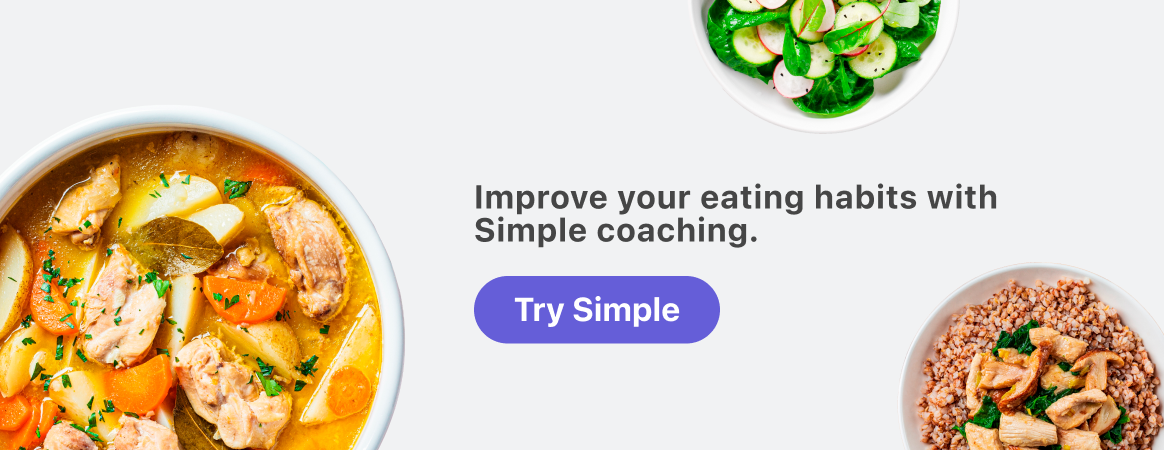
- Wien M, Haddad E, Oda K, Sabaté J. A randomized 3×3 crossover study to evaluate the effect of Hass avocado intake on post-ingestive satiety, glucose and insulin levels, and subsequent energy intake in overweight adults. Nutr J. 2013 Nov 27;12:155.
- Cerdó T, García-Santos JA, G Bermúdez M, Campoy C. The Role of Probiotics and Prebiotics in the Prevention and Treatment of Obesity. Nutrients [Internet]. 2019 Mar 15;11(3).
- Tay A, Pringle H, Penning E, Plank LD, Murphy R. PROFAST: A Randomized Trial Assessing the Effects of Intermittent Fasting and Lacticaseibacillus rhamnosus Probiotic among People with Prediabetes. Nutrients [Internet]. 2020 Nov 17;12(11).
- Cui J, Lian Y, Zhao C, Du H, Han Y, Gao W, et al. Dietary Fibers from Fruits and Vegetables and Their Health Benefits via Modulation of Gut Microbiota. Compr Rev Food Sci Food Saf. 2019 Sep;18(5):1514–32.
- Głąbska D, Guzek D, Groele B, Gutkowska K. Fruit and Vegetable Intake and Mental Health in Adults: A Systematic Review. Nutrients [Internet]. 2020 Jan 1;12(1).
- Shih CK, Chen CM, Hsiao TJ, Liu CW, Li SC. White Sweet Potato as Meal Replacement for Overweight White-Collar Workers: A Randomized Controlled Trial. Nutrients [Internet]. 2019 Jan 14;11(1).
- Holt SH, Miller JC, Petocz P, Farmakalidis E. A satiety index of common foods. Eur J Clin Nutr. 1995 Sep;49(9):675–90.
- Randolph JM, Edirisinghe I, Masoni AM, Kappagoda T, Burton-Freeman B. Potatoes, glycemic index, and weight loss in free-living individuals: practical implications. J Am Coll Nutr. 2014 Oct 10;33(5):375–84.
- Ratliff J, Leite JO, de Ogburn R, Puglisi MJ, VanHeest J, Fernandez ML. Consuming eggs for breakfast influences plasma glucose and ghrelin, while reducing energy intake during the next 24 hours in adult men. Nutr Res. 2010 Feb;30(2):96–103.
